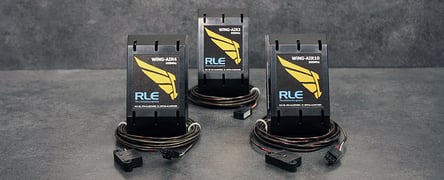RLE’s WiNG wireless facility monitoring products came onto the scene almost 18 months ago, and the market’s acceptance and implementation of these products has been phenomenal. A proprietary wireless platform that features a wide variety of sensors, a web interface designed to keep the most relevant information close at hand, and open protocols for unlimited integration, has proven hard to beat in the global marketplace. Most notably, customers who have purchased and installed WiNG are coming back to order more systems. Customers love WiNG sensors because they feature:
- A battery life up to 12 years at room temperature
- Up to 600 feet indoor, direct line of sight transmission range
- 98% packet transmission accuracy
- A compact footprint
Now RLE has another addition to this popular line of wireless sensors – air velocity sensors. Poor or obstructed airflow can significantly affect cooling performance and lead to equipment failure. It’s important to detect when your equipment is getting hot, and it’s just as important to know why. RLE now offers a suite of air velocity sensors, compatible with the WiNG-MGR and BMS-WiNG controllers, so you can choose just the right sensor for your application:
- The wide-range 10m/s WiNG-AIR10, with a range of 0-10 meters per second, +/-5%
- The higher precision 4 m/s WiNG-AIR4, with a range of 0-4 meters per second, +/-5%
- The more affordable WiNG-AIR3, with a range of 0-3 meters per second, +/-10%
WiNG-AIR sensors are in stock and ready to ship today!
WiNG sensors are also available in:
WiNG-T – wireless temperature
WiNG-TH – wireless temperature and humidity, with optional calculated dew point
WiNG-DI – wireless transmitter that accepts one wired NO or NC digital input
WiNG-DAP – wireless differential air pressure sensor
WiNG-ANLG – wireless transmitter that accepts one wired 4-20mA, 0-5V, or 0-10V analog input
WiNG-LD – wireless leak detection
WiNG-RTD – wireless transmitter that accepts a wired 1K Ohm platinum RTD sensor
WiNG-THRM – wireless transmitter that accepts a thermistor input



.png?width=58&height=58&name=X_logo_2023_(white).png)
